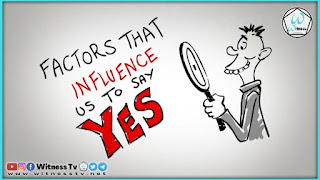THE SCIENCE OF PERSUASION: HOW TO INFLUENCE CUSTOMER DECISIONS
Why Persuasion Matters in Marketing?
Imagine walking into a store and receiving a free sample of gourmet chocolate. You weren’t planning to buy it, but suddenly, you feel a subtle obligation to make a purchase. This is not just a sales trick—it’s the power of persuasion psychology at work.
Persuasion is a scientifically proven method that influences human behavior and decision-making. Marketers, businesses, and brands use persuasion to shape customer perceptions, increase sales, and build long-term relationships.
One of the most well-known studies on persuasion comes from Dr. Robert Cialdini, a professor of psychology and marketing at Arizona State University, USA. In 1984, he introduced the Six Principles of Persuasion, based on years of research in psychology and behavioral science. These principles—Reciprocity, Scarcity, Authority, Consistency, Liking, and Social Proof—are still widely used in modern marketing strategies.
According to a Harvard Business Review study (2017), companies that apply persuasion-based marketing techniques see a 30% increase in customer engagement and a 23% rise in sales conversions compared to traditional marketing.
In this article, we will explore these six principles with real-world marketing examples, research findings, and case studies to help you understand how to ethically influence customer decisions.
Reciprocity – The Power of Giving First
Humans have a natural tendency to return favors. When someone does something for us, we feel obligated to do something in return. This psychological principle, known as reciprocity, is one of the most powerful persuasion techniques in marketing.
How Reciprocity Works in Marketing
In 1974, a study by sociologist Philip Kunz (Brigham Young University, USA) demonstrated the power of reciprocity. Kunz sent out Christmas cards to 200 randomly selected strangers. Surprisingly, he received over 100 handwritten responses from people who felt compelled to reply—even though they didn’t know him!
This experiment proves that small gestures can create a sense of obligation, leading to reciprocal actions. Marketers use this principle to increase customer loyalty and boost sales.
Real-World Examples of Reciprocity in Marketing
✔️ Free Samples Lead to More Sales
- Supermarkets and brands like Costco and Starbucks offer free samples because it increases the likelihood of purchase. Studies show that customers who receive free samples are 75% more likely to buy the product (Journal of Consumer Psychology, 2018).
✔️ Freemium Models in Digital Marketing
- Software companies like Spotify, Canva, and Grammarly provide free versions of their services, leading to higher conversion rates for paid upgrades.
✔️ Exclusive Discounts and Gifts
- Amazon Prime’s free shipping and early access to deals create a sense of exclusivity, making members more loyal and encouraging repeat purchases.
✔️ Personalized Offers & Thank You Emails
- Studies show that companies that send thank-you emails after a purchase see a 29% increase in customer retention (MarketingProfs, 2022).
How to Apply Reciprocity in Your Business
✅ Offer valuable content for free (e-books, guides, webinars).
✅ Provide discounts or gifts to first-time customers.
✅ Send personalized appreciation messages to customers.
✅ Create a VIP membership program with exclusive perks.
Scarcity – The Fear of Missing Out
Have you ever seen a “Limited Stock” or “Only 2 Left!” message while shopping online and felt an urgent need to buy? This is the power of scarcity, a psychological trigger that makes people value things more when they appear rare or difficult to obtain.
Scarcity plays on FOMO (Fear of Missing Out), pushing customers to act quickly before they lose an opportunity. Studies have shown that scarcity-driven marketing can increase conversions by up to 226% (ConversionXL, 2020).
How Scarcity Works in Marketing
One of the earliest studies on scarcity was conducted by Stephen Worchel (University of Virginia, 1975). In his experiment, participants were given a jar of cookies. Some jars contained 10 cookies, while others had only 2 cookies. Despite being the same cookies, the participants rated the ones in the nearly empty jars as more desirable.
This study confirmed that people assign higher value to items that are scarce or exclusive—a principle that brands use to drive sales.
Real-World Examples of Scarcity in Marketing
✔️ Flash Sales & Limited-Time Offers
- Brands like Amazon and AliExpress use countdown timers for discounts to push quick decisions.
- Airlines such as Emirates and Qatar Airways display “Only 3 seats left at this price!” to create urgency.
✔️ Exclusive & Limited-Edition Products
- Nike’s limited-edition sneaker drops create hype and drive demand through artificial scarcity.
- Apple releases special-edition iPhones that sell out quickly, increasing perceived value.
✔️ Waitlists & Invite-Only Memberships
- Clubhouse (audio social app) skyrocketed in popularity by making sign-ups invite-only.
- Tesla Cybertruck’s pre-order model made customers rush to reserve a spot.
✔️ Out-of-Stock Strategy
- Online stores sometimes show an item as ‘out of stock’ before restocking to increase demand (Journal of Consumer Research, 2019).
How to Apply Scarcity in Your Business
✅ Use countdown timers for sales and offers.
✅ Highlight low stock alerts (e.g., “Only 5 left!”).
✅ Offer limited-edition products or services.
✅ Create exclusive memberships or VIP clubs.
Authority – Trusting Experts & Influencers
When a doctor recommends a medicine, we trust it. When a celebrity endorses a product, we consider buying it. This is the power of authority, a persuasion technique that influences people by showcasing expertise, credibility, and trustworthiness.
Customers are more likely to follow advice, buy products, or change behaviors when recommendations come from trusted professionals, well-known brands, or industry leaders.
How Authority Works in Marketing
One of the most famous studies on authority was conducted by Stanley Milgram (Yale University, 1961). His experiment showed that 65% of participants obeyed instructions from an authoritative figure, even when asked to perform uncomfortable tasks. This research proved that people have a natural tendency to follow authoritative figures, making it a powerful tool in marketing.
A 2021 study by Edelman Trust Barometer found that 63% of consumers trust expert-backed brands over traditional advertising, and businesses using authority marketing see a 33% increase in conversions.
Real-World Examples of Authority in Marketing
✔️ Expert Endorsements & Certifications
- Colgate and Sensodyne use dentist recommendations to build trust.
- Skincare brands highlight “Dermatologist Approved” labels to increase credibility.
✔️ Influencer & Celebrity Marketing
- Nike partners with sports icons like Cristiano Ronaldo to enhance its brand image.
- Tech brands collaborate with YouTube tech reviewers (e.g., Marques Brownlee) to influence purchasing decisions.
✔️ Using Data, Statistics & Case Studies
- Google and Meta use research reports to establish industry authority.
- Amazon highlights ‘#1 Best Seller’ badges to show popularity and credibility.
✔️ Thought Leadership & Educational Content
- Companies like HubSpot and Neil Patel share free guides, blogs, and webinars to position themselves as industry experts.
- Harvard Business Review publishes in-depth studies to gain authority in business consulting.
How to Apply Authority in Your Business
✅ Showcase expert testimonials & certifications.
✅ Use influencer marketing to build credibility.
✅ Highlight awards, case studies, and statistics.
✅ Create educational content to establish expertise.
Consistency – The Power of Small Commitments
People like to be consistent with their past behaviors, beliefs, and commitments. Once someone makes a small decision, they are more likely to continue in the same direction to maintain their self-image.
This psychological effect is known as the commitment and consistency principle, first introduced by Dr. Robert Cialdini (Arizona State University, 1984) in his book Influence: The Psychology of Persuasion.
How Consistency Works in Marketing
One of the most famous studies on consistency was conducted by Freedman & Fraser (Stanford University, 1966). They asked homeowners to place a small sign in their yard supporting safe driving. Two weeks later, the same homeowners were far more likely to agree to putting up a large, ugly billboard with the same message. Why? Because they had already made a small commitment, and saying yes again felt natural.
Another study by Gollwitzer & Sheeran (Germany, 2006) found that when people publicly commit to something (e.g., writing it down or telling others), they are 91% more likely to follow through.
Real-World Examples of Consistency in Marketing
✔️ Free Trials & Low-Commitment Sign-ups
- Netflix offers a free month, increasing the chances of continued subscriptions.
- Amazon Prime’s free trial hooks users, making them more likely to pay for membership.
✔️ Small Engagements Lead to Bigger Conversions
- E-commerce brands ask customers to ‘wishlist’ or ‘like’ items, increasing purchase rates.
- LinkedIn encourages users to complete small profile sections, leading to higher engagement.
✔️ Asking for Small Initial Commitments
- Charities ask for small donations first (e.g., $1/month), then gradually increase the ask.
- Gyms offer free first sessions, increasing membership sign-ups.
✔️ Loyalty Programs & Repeat Customers
- Starbucks Rewards gives small perks for frequent visits, making people return.
- Airline frequent flyer programs build long-term loyalty through gradual rewards.
How to Apply Consistency in Your Business
✅ Encourage small commitments first (free trials, samples, surveys).
✅ Use progressive sign-ups (start with name, then email, then full profile).
✅ Reward repeat customers (loyalty points, discounts for multiple purchases).
✅ Ask customers to engage (wishlist, save items, leave reviews).
Liking – The Influence of Personal Connection
People are more likely to say yes, trust recommendations, and buy from those they like. Whether it’s a brand, salesperson, or influencer, we tend to favor those we find relatable, friendly, or similar to us.
Dr. Robert Cialdini (1984) identified that liking is a major factor in persuasion, as people naturally prefer to do business with those they feel emotionally connected to.
How Liking Works in Marketing
A study by Jerry M. Burger (Santa Clara University, 2001) found that participants were twice as likely to comply with a request if it came from someone they liked or shared similarities with.
In another experiment, Joseph P. Forgas (University of New South Wales, 1998) discovered that attractive salespeople generated 43% more positive responses, reinforcing the idea that physical appeal, friendliness, and relatability can drive sales.
Real-World Examples of Liking in Marketing
✔️ Brand Storytelling & Emotional Connection
- Apple’s marketing focuses on creative individuals, making customers feel part of a unique community.
- Nike’s ‘Just Do It’ campaign features real people overcoming challenges, creating emotional engagement.
✔️ Relatable Influencer & Social Media Marketing
- Brands like Glossier and Gymshark use micro-influencers who feel like everyday people rather than celebrities.
- Tesla’s CEO, Elon Musk, engages personally on Twitter, strengthening customer loyalty.
✔️ Personalized & Friendly Customer Interaction
- Zappos is known for its friendly customer service, which increases brand loyalty.
- Coca-Cola’s “Share a Coke” campaign personalized bottles with customer names, making people feel special.
✔️ Similarity & Social Proof
- Airbnb’s host stories create a sense of trust and connection, making travelers feel comfortable.
- Facebook’s ‘People You May Know’ feature encourages users to stay engaged by connecting with familiar faces.
How to Apply Liking in Your Business
✅ Use brand storytelling to connect emotionally with customers.
✅ Work with relatable influencers who align with your brand.
✅ Encourage personalized interactions (using customers’ names, responding on social media).
✅ Highlight real customer stories and testimonials.
Social Proof – The Power of Group Influence
People tend to follow the actions of others, especially in uncertain situations. This psychological effect is known as social proof, where people assume that if others are doing something, it must be the right choice.
Dr. Robert Cialdini (1984) highlighted social proof as one of the most powerful persuasion techniques, influencing decisions in marketing, sales, and everyday behavior.
How Social Proof Works in Marketing
A 2016 study by BrightLocal found that 88% of consumers trust online reviews as much as personal recommendations. Another experiment by Solomon Asch (Swarthmore College, 1951) revealed that people would conform to group decisions, even when they believed they were wrong, showing how social influence shapes choices.
Real-World Examples of Social Proof in Marketing
✔️ Customer Reviews & Testimonials
- Amazon’s product ratings influence 93% of buyers, proving the power of customer feedback.
- Google Reviews impact local business credibility, with businesses having a 4.5+ rating seeing a 30% higher conversion rate.
✔️ User-Generated Content & Influencer Endorsements
- Nike and Adidas showcase real customers using their products on social media, building trust.
- Tech brands like Samsung collaborate with YouTubers for product reviews, influencing purchase decisions.
✔️ Follower Count & Popularity Metrics
- Instagram’s “1M followers” badge creates credibility, making brands seem trustworthy.
- YouTube’s ‘Most Watched’ and ‘Trending’ sections influence users to click on popular videos.
✔️ “Best-Seller” & “Limited Stock” Labels
- Booking.com shows “Only 2 rooms left!” to create urgency based on demand. - McDonald’s “Over 99 Billion Served” slogan reassures customers of its widespread popularity.
How to Apply Social Proof in Your Business
✅ Encourage and display customer reviews on websites & social media.
✅ Collaborate with influencers & industry leaders for endorsements.
✅ Use real user photos & videos to showcase satisfied customers.
✅ Highlight best-selling products and customer favorites.
Did You Know?
The Power of a Simple Word: "Because":
- A Harvard study by Ellen Langer (1978) found that when people asked to cut in line at a copier, their success rate jumped from 60% to 94% when they added the word "because" to their request—even when the reason was trivial! This highlights the power of giving a reason in persuasion.
FOMO (Fear of Missing Out) Drives 60% of Millennials' Purchases:
- A 2020 study by TrustPulse found that 60% of millennials make purchases based on FOMO (Fear of Missing Out), proving the effectiveness of scarcity and urgency in marketing.
Social Proof Works Even When It's Fake:
- A 2013 study by MIT researchers discovered that when an article received fake positive upvotes, it attracted 32% more engagement. This highlights how people are drawn to things that seem popular, even if artificially inflated.
The "Left-Digit Effect" Influences Pricing Decisions:
- A 2005 study from the University of Chicago and MIT found that prices ending in .99 (e.g., $4.99) are perceived as significantly lower than round prices (e.g., $5.00), even though the difference is only one cent.
Authority Cues Can Increase Compliance by Over 60%:
- In Stanley Milgram’s (1961) famous authority experiment, people were willing to administer what they thought were lethal electric shocks simply because an authority figure instructed them to. This shows how people naturally trust authority figures, making certifications, expert endorsements, and professional credentials powerful persuasion tools.
80% of People Say They Are More Likely to Trust Recommendations from Peers:
- A Nielsen survey (2021) found that 80% of consumers trust peer recommendations over traditional advertising. This reinforces the importance of user-generated content, influencer marketing, and customer testimonials.
A Sense of Urgency Can Double Sales:
- A study by the Journal of Consumer Research (2015) found that flash sales and countdown timers increase conversion rates by over 90%, showing how time-limited offers boost decision-making speed.
"Anchoring" Can Change Perceived Value:
- The Anchoring Effect is a cognitive bias where people rely heavily on the first piece of information they receive. A study by Kahneman & Tversky (1974) found that if an initial price is high, customers will perceive a discounted price as a great deal—even if the product is still expensive.
The More Choices, The Less Action:
- The famous "Jam Experiment" by Sheena Iyengar (2000, Columbia University) showed that customers were 10 times more likely to buy when presented with 6 options instead of 24 options. This proves that limiting choices can increase conversions by reducing decision fatigue.
People Spend More When Paying with Credit Cards:
- A Drazen Prelec and George Loewenstein study (MIT, 1998) found that consumers spend 83% more when using credit cards than cash, showing how digital payments reduce the “pain of paying.”
Mastering the Science of Persuasion in Marketing
Understanding and applying the seven principles of persuasion—Reciprocity, Commitment & Consistency, Authority, Liking, Social Proof, Scarcity, and Unity—can significantly enhance your ability to influence customer decisions and drive business success.
Key Takeaways
🔹 Reciprocity – Give value first to receive customer loyalty in return.
🔹 Commitment & Consistency – Encourage small actions that lead to bigger commitments.
🔹 Authority – Use expertise and credibility to build trust.
🔹 Liking – Create emotional connections with customers.
🔹 Social Proof – Show that others trust and use your brand.
🔹 Scarcity – Create urgency to drive immediate action.
Why Persuasion Matters in Modern Marketing?
✔️ Data-driven Influence:
Studies from institutions like Harvard, Stanford, and the University of Virginia confirm that these psychological principles directly affect consumer behavior.
✔️ Real-World Impact:
Brands like Amazon, Nike, Apple, and Airbnb successfully use these strategies to increase engagement and sales.
✔️ Competitive Edge:
Mastering persuasion techniques helps businesses stand out in a crowded market.
Persuasion is not about manipulation; it’s about understanding human behavior and guiding customers toward decisions that benefit both them and your business. Whether you're selling a product, building a brand, or leading a marketing campaign, applying these psychological insights will help you create trust, engagement, and long-term success.
Comment Below What We Should Talk About Next, Your Requests Are Our Priority🤝
"Need compelling content that strategically delivers your brand's message?
We specialize in creating impactful articles and educational content
tailored to your audience. Let's work together to elevate your brand. Contact us today to get started!"
COMMENT YOUR THOUGHTS BELOW👇

























0 Comments